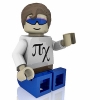| Welcome, Guest |
You have to register before you can post on our site.
|
| Online Users |
There are currently 174 online users.
» 2 Member(s) | 165 Guest(s)
Applebot, Baidu, Bing, Facebook, Google, Twitter, Yandex, Rene Rechthaler
|
|
|
| LDCad stepping question |
|
Posted by: Roland Dahl - 2022-03-19, 9:19 - Forum: LDraw Editors and Viewers
- Replies (3)
|
 |
Hello gents, long time no see.
I recently dug out LDCad again to build the 75192 Falcon.
I try to implement the structure and building steps of the building instructions to the LDraw file. For realizing this I have to work with the grouping feature.
For example: I build the landing gear (building step 131 to 149) as a group. So I can add these steps exactly as main steps 131 to 149 to the LDraw file.
But I would prefer to build the landing gear as a submodel, as it is much, much more comfortable to work with submodels. But using a submodel instead of using a group is destroying the main step numbering, as a submodel starts with sub step 1.
Question: Is it somehow possible to generate a new submodel AND continue the main stepping (here 131 to 149) within this submodel instead if starting with substep 1?
|

|
|
| Spherical texture mapping |
|
Posted by: Max Murtazin - 2022-03-16, 14:50 - Forum: General LDraw.org Discussion
- Replies (5)
|
 |
Hello everyone! I am having trouble with understanding how spherical texture mapping in LDraw works. I tried to use both guide from the specifications and also looking for some examples on the forum, but for some reason neither are willing to show up after I load them in any LDraw viewer. Is spherical mapping broken, or I might be missing something?
|

|
|
| Texture Images and the CC BY license |
|
Posted by: Orion Pobursky - 2022-03-15, 19:48 - Forum: Official File Specifications/Standards
- Replies (2)
|
 |
I identified what is a potential problem with texture images and the requirements of the CC BY license: there is no current mechanism to track authors and modifications to these images. While we haven't had an image recycled to the library for a fix, I feel it is only a matter of time before this happens. The PT tracks these events internally and this data is saved between releases but there is no method for someone who downloads the library to know who has authored an image and what its license is. A solution needs to be found.
I have a few options I can think of:
1. A "Texture Attribution" document included with the library that lists the filename, author, modification authors (if there are any), and license for each image.
Pros: Does not require any modifications to the PT software.
Cons: Labor intensive for the Parts Admin.
Note: I have made such a document and will be including it with the library starting the May release.
2. Add this information to the PNG meta data
Pros: info lives in the files
Cons: Very technically challenging, data not available in an intuitive way, not sure if this meets the intent of CC BY, would have to research.
3. Have a parallel dat file for each png file or, conversely, include texture mod HISTORY in the parent file
Pros: Easy to implement, uses the standard header.
Cons: Adds complexity to the library.
Thoughts?
|

|
|
| Compare 2 files for BOM |
|
Posted by: Jaco van der Molen - 2022-03-14, 21:15 - Forum: LDraw Editors and Viewers
- Replies (26)
|
 |
Hi all,
I have this big model of 12000+ bricks I am working on.
Somewhere on the way, I lost some work :-( and had to redo a few things here and there.
Before the loss of work, however, the model was 99% complete and I was able to restore the lost file and thus its BOM.
Finishing the model, there are some changes and additions here and there and I kind of lost what bricks went missing, got replaced, and are not used anymore.
So, my question: Is there a clever way to compare 2 files to see the difference in the BOM?
Thanks!
Jaco
|

|
|
|